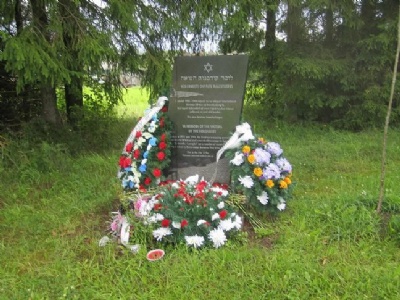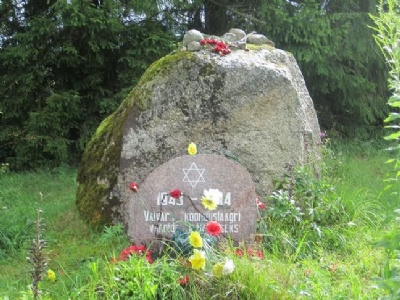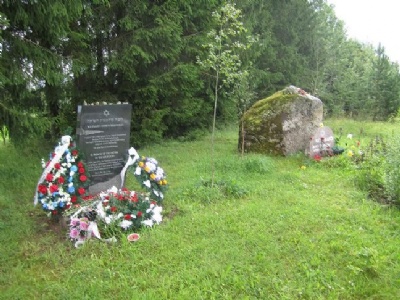Vaivara
About twenty kilometres west of Narva in north east Estonia lies a small town called Vaivara and here in august 1943 the Nazis established a transit camp for Jews evacuated from the liquidated ghettos in Lithuania and Latvia. There were also a small number of Russian, Dutch and Estonian prisoners in the camp. Vaivara and its satellite camps were first under the control of Organisation Todt (civil and military engineering) but soon came under the control of the SS. The assignment to build the camp was given to SS-Sturmbannführer Hans Aumeier, who previously served in Auschwitz as a Schutzhaftlagerführer. Aumeier later became camp commander for Vaivara. Vaivara had about twenty satellite camps of which the majority were located in northern Estonia.
About 20,000 Jews passed through Vaivara before being sent on to other camps. In these camps they were used as slave workers to dig tank ditches, mine slates, railway construction, forestry, etc. The purpose of Vaivara and its satellite camps was to prepare and build defence facilities for the expected Soviet offensive (the offensive was launched in August 1944). Beside being a transit camp, Vaivara also became a concentration camp with about 1,300 Jews used as slave labor. Prisoners in Vaivara were forced to live in substandard wooden barracks. Crowded barracks, lack of medicine, lack of sanitary facilities, harsh weather meant that diseases like typhoid fever was ever present. There was a great fear of epidemics erupting, not only that they killed valuable salve labor, the SS personal and villages outside the camp were also at risk being affected. In December 1943 a typhoid epidemic erupted and killed 20 percent of the prisoners.
The SS conducted regular selections to remove those affected by diseases, partly beacause they as sick were unproductive and therefore not useable as slavelabor, partly because as infected they were capable of spreading the disease further on. These prisoners were taken away killed. In september 1944 the Soviet Red army approached and SS began to evacuate the prisoners and demolish the camp. The prisoners were forced out on Death marches to other camps westward. Some by boat from Tallinn to the Stutthof concentration camp in Poland.
Current status: Demolished with monument (2011).
Location: 59°22'06.49"N 27°45'38.07"E
Get there: Car.
Follow up in books: Kogon, Eugen: The Theory and Practice of Hell: The German Concentration Camps and the System Behind Them (2006).



Nothing remains of the camp, what was not demolished by the retreating Nazis, the Russians or locals demolished to be used elsewhere in postwar Estonia.